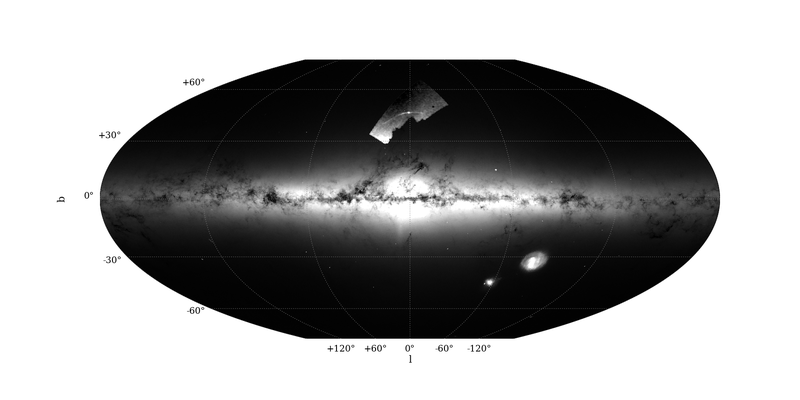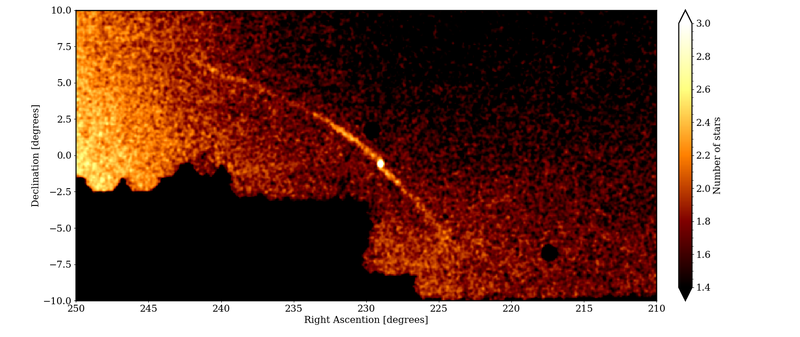A supra-massive population of stellar-mass black holes in the globular cluster Palomar 5
Mark Gieles (ICREA, University of Barcelona)
Denis Erkal (University of Surrey)
Fabio Antonini (Cardiff University)
Eduardo Balbinot (University of Groningen)
Jorge Peñarrubia (University of Edinburgh)
Palomar 5 is one of the sparsest star clusters in the Galactic halo and is best-known for its spectacular tidal tails, spanning over 20 degrees across the sky. With N-body simulations we show that both distinguishing features can result from a stellar-mass black hole population, comprising ~20% of the present-day cluster mass. In this scenario, Palomar 5 formed with a "normal" black hole mass fraction of a few per cent, but stars were lost at a higher rate than black holes, such that the black hole fraction gradually increased. This inflated the cluster, enhancing tidal stripping and tail formation. A gigayear from now, the cluster will dissolve as a 100% black hole cluster. Initially denser clusters end up with lower black hole fractions, smaller sizes, and no observable tails. Black hole-dominated, extended star clusters are therefore the likely progenitors of the recently discovered thin stellar streams in the Galactic halo.
The paper pre-print can be found here.
All sky view
Below is a all sky view in galactic coordinates. The number of stars is higher in brighter regions. Most of the image, where the Milky Way plane is visible (b = 0 degrees), is produced using Gaia eDR3 data. The small patch in the top-centre shows a region where deeper DESI Legacy Imaging Survey (DECaLS) data is available, which allows for Palomar 5 and its tidal tails to be seen.

Data from DECals and Gaia. PDF version
Equatorial view
A map of the sky showing in color-scale the number of stars in a region around Palomar 5. This map was constructed using DECaLS DR9, which was processed in a similar to way to what Bonaca and collaborators did in their 2019 paper.

Data from DECals. PDF version
Night sky view
If we were able to see the very faint stars of Palomar 5 and its tidal tails, they would look like the image below. We represent stars as circles with size proportional to their brightness and colour proportional to their true colour. In this figure we heavily filtered Palomar 5 stars from the interloping background of regular Milky Way stars using the matched-filter technique Balbinot et al. (2011).

Data from DECaLS. PDF version
Animation
Simulation of Palomar 5 showing the formation of its tidal tails and the distribution of black holes. This video will be availabe from July 5th 2021 after 5pm (CEST).
Credits
All images and animations were generated by the authors.